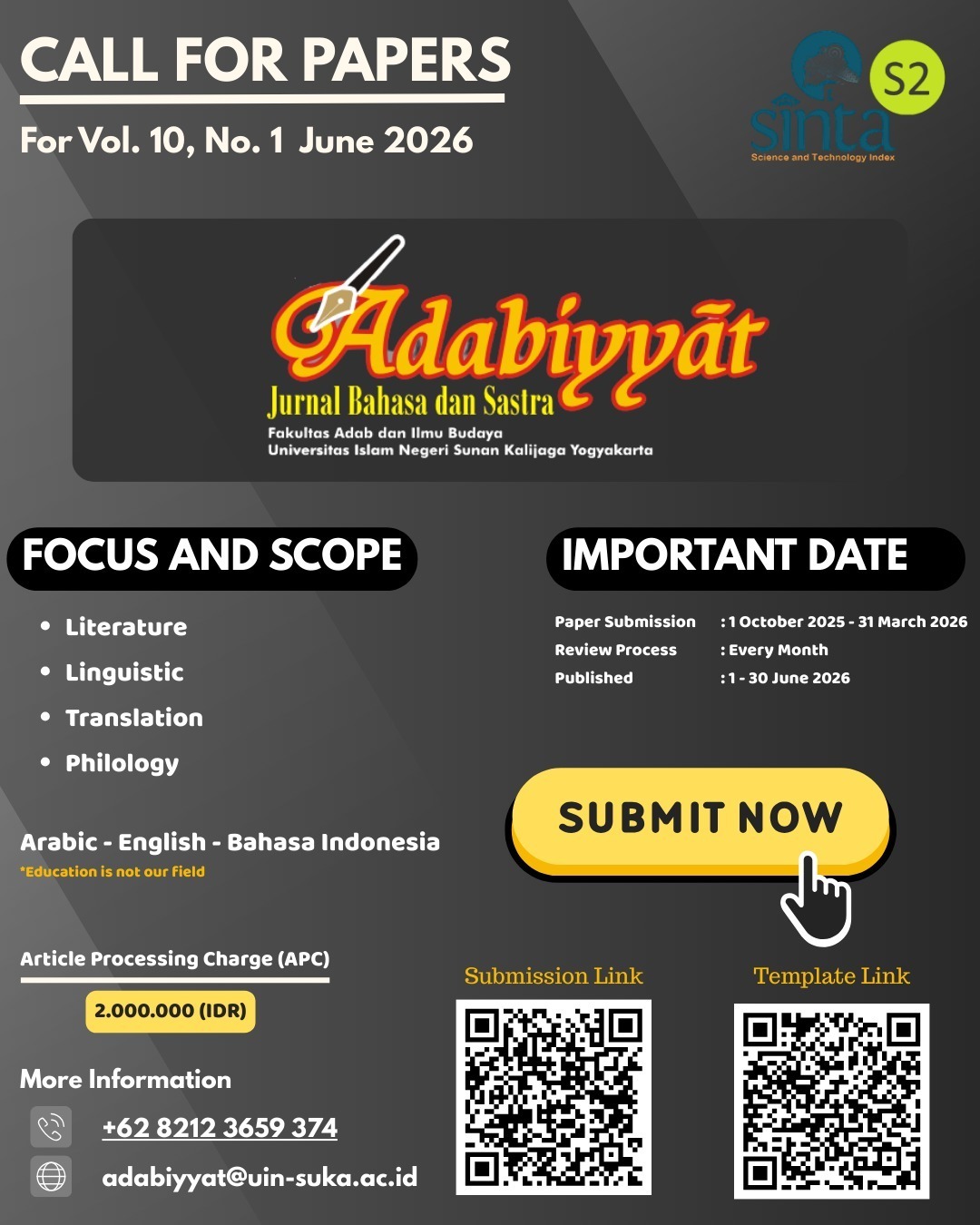ORTOGRAFI ARAB DAN PROBLEMATIKANYA
DOI:
https://doi.org/10.14421/ajbs.2012.11107Abstract
The old Arabic orthography contains some flaws. Besides having no different symbols to differentiate short and long vowels, it had no diacritics to differentiate the letters, which caused significant reading problems. Those problems became more complicated when it became the means in the process of writing the Qur’an since it caused errors in its recitation. In the post-Mohammedan period, when Islam was spread outside the Arabic lands, some non-Arabic Moslems had difficulties to read the Qur’an. Those problems concerned many scholars and urged them to find solution. Some efforts were done by inventing the reader-friendly orthographic system as it is well known today. This paper aims to discuss that topic. However, some new flaws emerged. The orthographic modifications which have been sufficient for writing needs to be developed and adapted to present demands. Some scholars have proposed some new ideas. Generally, these ideas can be grouped into two opposing views: firstly, those which preserve the existing orthographic tradition, pioneered by Emīl Badī’ Ya’qūb; secondly, those which go beyond it, suggesting almost total transformation, pioneered by Anīs Farīḥa. This paper also discusses their ideas as its second purpose. Based on different epistemological bases, the application of each idea will affect differently in learning/teaching as well as in Arabic religiosity and nationalism.
Downloads
References
‘Abd al-Tawwāb, Ramaḍān. 1997. Fushūl fī Fiqh al-Lugah. Maktabah al-Khanjī. Kairo.
‘Abd ar-Raḥmān, dkk. 2005. Al-‘Arabiyyah baina Yadaik. cet. 3. Riyāḍ. Al-‘Arabiyyah li al-Jamī’.
Al-Bagdādī, Hāsyim Muḥammad. 1986. Qawā’id al-Khaṭ al-‘Arabī. Beirut. ‘Ālam al-Kutub.
Al-Iskandarī, Aḥmad dan Musṭafā ‘Annānī. 1916. Al-Wasīṭ fī al-Adab al-‘Arabī wa Tārīkhihī. Mesir. Dār al-Ma’ārif.
Al-Ṭanṭāwī, Muḥammad. Nasy’ah an-Naḥw wa Tārīkhuhā. 1969. cet. 2. Mesir. Dār al-Ma’ārif.
Ḍaif, Syauqī. 1976. Al-Madāris an-Naḥwiyyah. Mesir. Dār al-Ma’ārif.
Esack, Farid. 2002. The Qur’an: A Short Introduction. England. Oneworld Publication.
Farīḥa, Anīs. 1981. Naḍariyyāt fī al-Luġah. Beirut. Dār al-Kitāb al-Lubnānī.
Farīḥa, Anīs. 1986. Al-Lahjāt wa Uslub Dirasatiha. cet. I. Beirut. Dār al-Jail.
Huda, Nurul. 2003. Melukis Ayat Tuhan Pengantar Praktis Berkaligrafi Arab. Yogyakarta. Gama Media.
Joseph, John. 2007. Al-Lugah wa al-Huwwiyyah Qaumiyyah-Iṡniyyah-Diniyyah, terj. ‘Abd al-Nūr al Kharāqī, Kuwait. ‘Ālam al-Ma’rifah.
Kementrian Pendidikan Nasional Indonesia. 2008. Kamus Besar Bahasa Indonesia, Edisi Keempat, cet. I, Jakarta. Gramedia Pustaka Utama.
Shīyanī, Maḥmud Isma’īl. t.t. Al-‘Arabiyyah lī al-Nāsyi’īn. Beirut. Mu’assasah Sa’īd ash-Sibāg.
Sirojuddin A.R, Didin. 1992. Seni Kaligrafi Islam. Jakarta. Multi Kreasi.
Sulaeman, Yasir. 2003. The Arabic Language and National Identity: a Study on Idealogy. Edinburg. Edinburg University Press.
Ya’qūb, Emīl Badī’. 1991. Fiqh al-Lugah wa Khaṣ ā'iṣ uhā. Beirut. Dār al-Tsaqāfah al-Islāmiyyah.
Downloads
Published
Issue
Section
License
- Adabiyyāt: Jurnal Bahasa dan Sastra publishes all articles entirely in full text.
- It is permissible for readers to download and to use it for scientific purposes and scientific dissemination.
- The author can re-publish the article that has been published by the Adabiyyāt: Jurnal Bahasa dan Sastra after obtaining written permission from the editor. This letter can be obtained by submitting a request letter for permission to republish the article to Adabiyyāt: Jurnal Bahasa dan Sastra via email adabiyyat@uin-suka.ac.id. In the second publication, the author is required to include information that the article was firstly published by the Adabiyyāt: Jurnal Bahasa dan Sastra.









